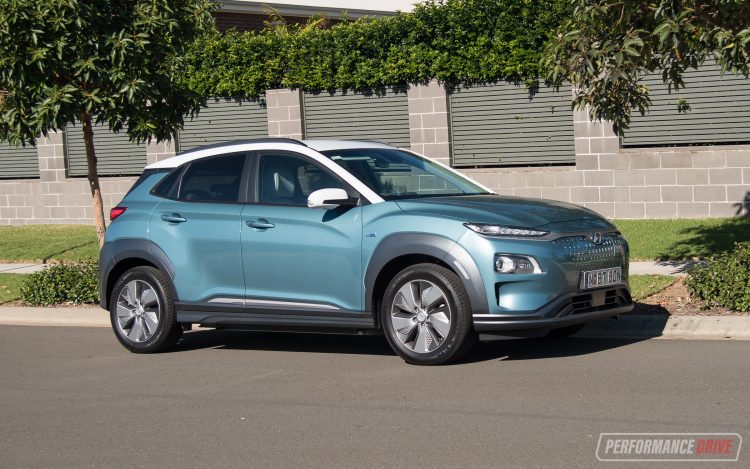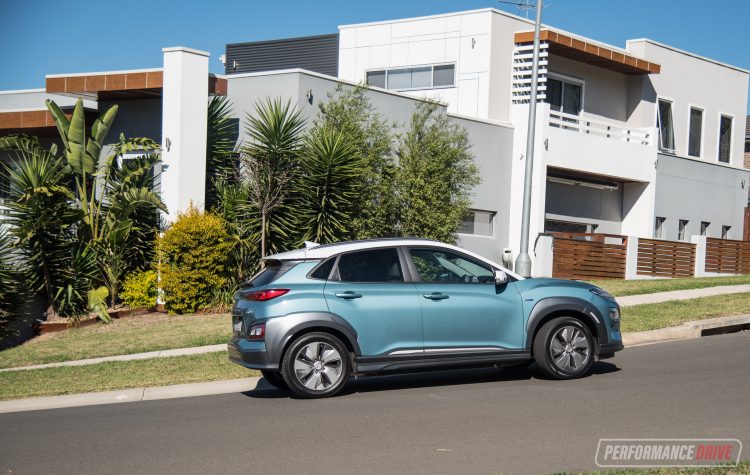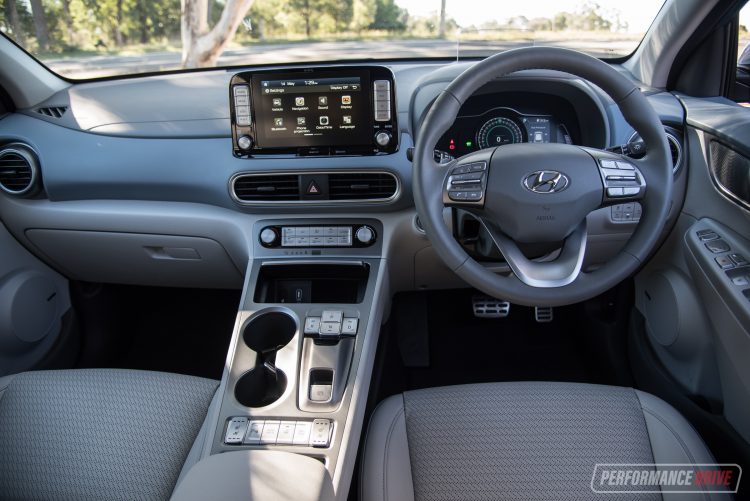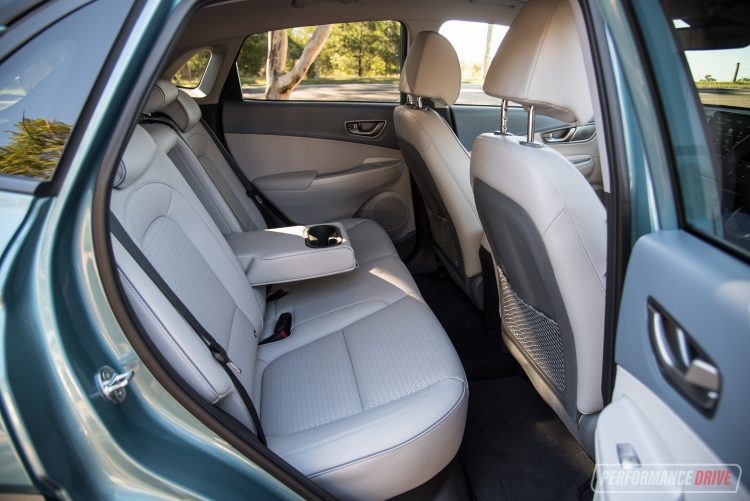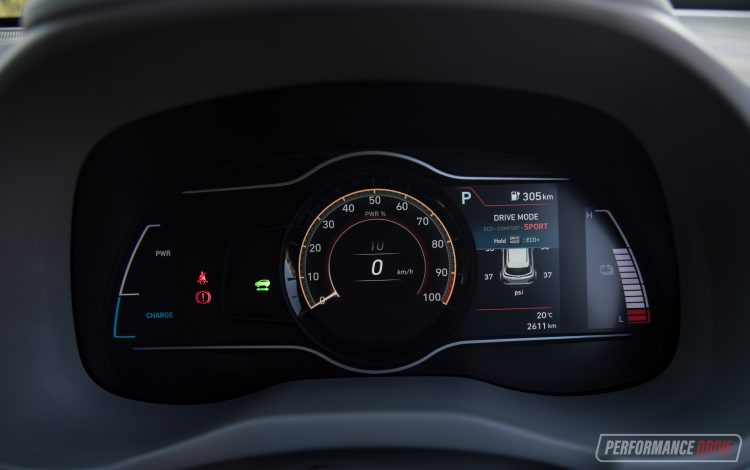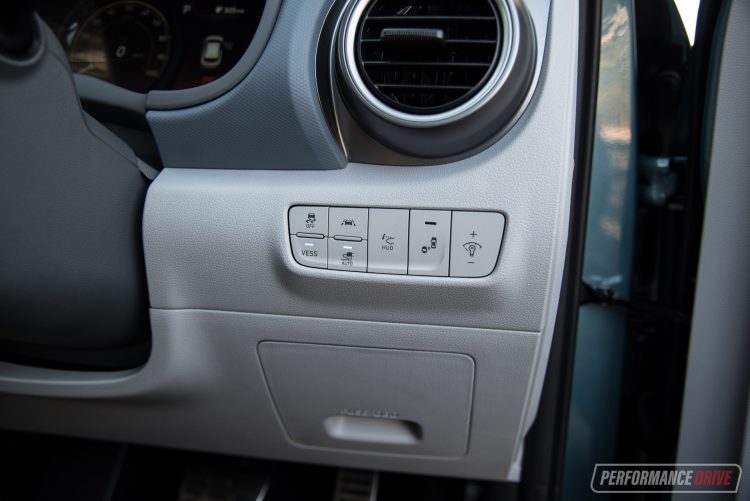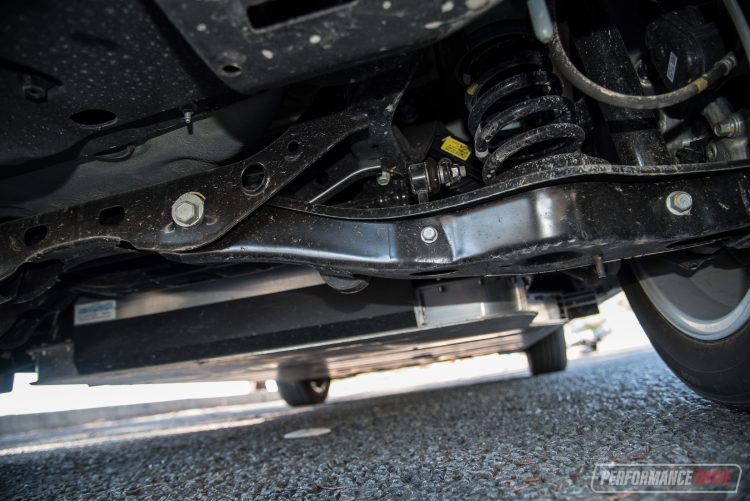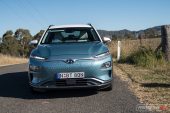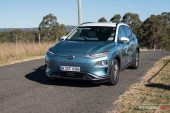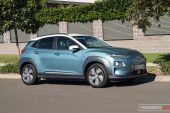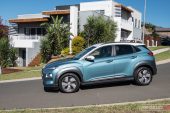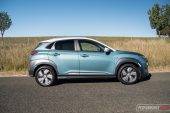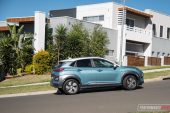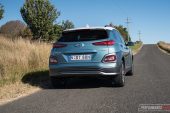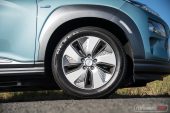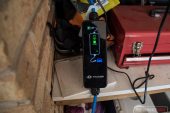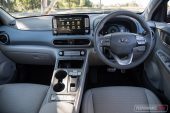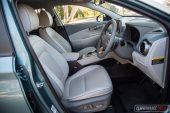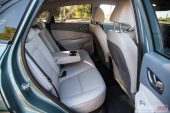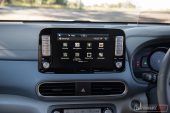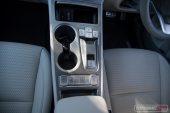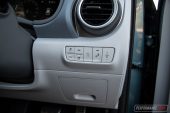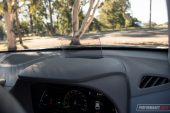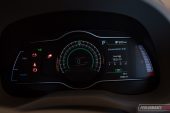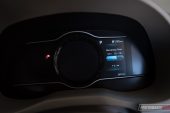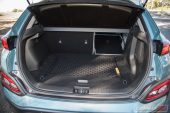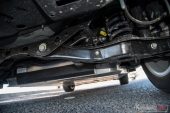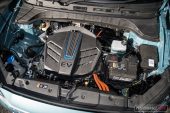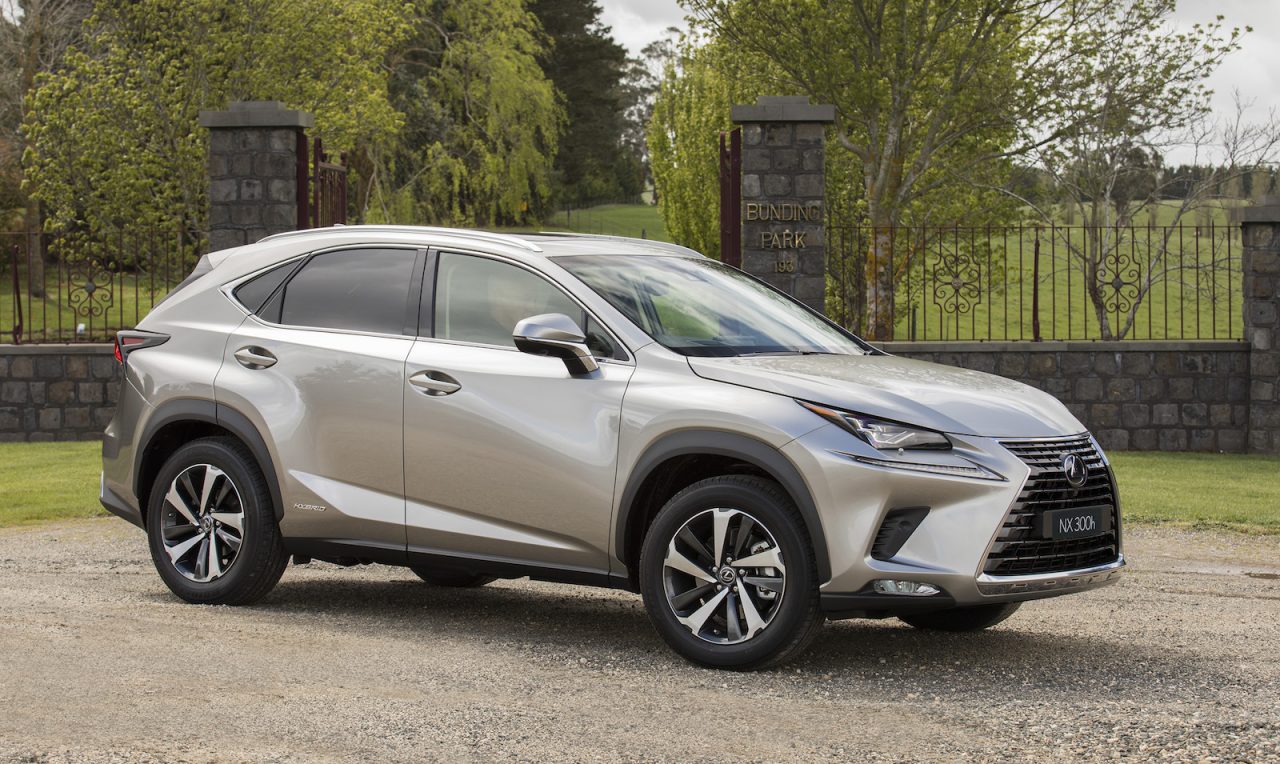When a new idea or technology is released to the world, it’s always smart to sit back and wait until it is tried and tested before buying it yourself. So, when will that time be for all-electric cars? The Hyundai Kona Electric might be the closest we’ve seen so far.
We’ve heard lots about Tesla and its customer waiting lists, and Hyundai itself has already released the IONIQ (review here). But the Kona Electric goes many steps further by being a more usable electric car where you don’t have to adjust your life to suit it.
Why? Mainly because the Kona Electric features a new long-range battery system from Hyundai that claims to provide an impressive driving range of up to 470km on a single charge (449km with World harmonised Light vehicle Testing Procedure (WLTP). All the while delivering a punchy 150kW and 395Nm of immediate grunt.
In Australia, the Kona Electric is offered in three variants; the Launch Edition (for a limited time only), the Elite and the Highlander. We’re excited to be testing the top-spec Highlander. Prices begin at $58,500 for the Launch Edition, and rise to $64,490 for the Highlander (plus on-road costs).
2019 Hyundai Kona Electric Highlander – THE SPECS
[column width=”47%” padding=”6%”]Electric system: 65kWh battery, 356 volts
Output: 150kW / 395Nm
Transmission: Single reduction gear; 7.981
Drive type: Front-wheel drive
Wheels: 17 X 7.0, 215/55
ANCAP: Five stars (scored 35.07 out of 37)
Tare weight: 1743kg
Power-to-weight: 11.62:1 (kg:kW)
Range: 449km (WLTP)
Recharge time: 100kW: 54min to 80%, 50kW: 75min to 80%, 240V: 9hr 35min to 100%[/column] [column width=”47%” padding=”0″]0-60km/h: 3.53 seconds*
0-100km/h: 6.86 seconds*
60-110km/h: 4.43 seconds*
1/8 mile: 9.93 seconds at 124.8km/h*
1/4 mile: 15.14 seconds at 153.4km/h*
Max acceleration: 0.642g
100-0km/h braking: 3.09 seconds at 38.55 metres*
Max deceleration: -1.081g
Priced from: $64,490[/column][end_columns]
* Figures as tested by PerformanceDrive on the day. Factory claims may be different
2019 Hyundai Kona Electric Highlander – THE PACKAGE
The great thing about the Kona Electric is that it uses a pre-existing practical small SUV body, and you don’t feel like you’re strapping yourself into an experimental car that barely has room for a suitcase. This is a vehicle you can take to your local Bunnings or even on a camping trip. Only the lack of a front grille is the most noticeable difference to a ‘normal’ Kona or any other small SUV. The rest of the car is the same as the quirky Kona we know, designed in California and built in South Korea.
Inside, it is just as practical as the conventional Kona. The materials used are probably not $65k worthy – some plastics are hard and feel cheap – but it is a comfortable and easy space to be in. There is also a bit more space offered around the centre console as there is no transmission hump in the floor, and gears are operated with four convenient buttons to select (reverse, drive, neutral or park) instead of the usual gear lever. It’s even easier to use than a gear lever.
The Kona Electric Highlander is very generously packaged with an Infinity eight-speaker sound system, Android Auto, Apple CarPlay and digital radio, climate control, key proximity locking, a digital instrument cluster, distance-controlled cruise control with stop and go function, daytime running LED lamps, digital tyre pressure display, heated steering wheel, heated and ventilated electric front seats, a sunroof, a wireless charging pad, auto high beam, and Hyundai’s ‘Auto Link’ feature that allows you to communicate with the car from your mobile phone (check live battery charge etc.).
Even safety features are generously included – none of the latest technologies are left out. You get blind-spot sensors, front and rear parking sensors, low- and high-speed forward collision mitigation, driver attention detection, head-up information display, lane departure warning with passive steering input, and rear cross-traffic warning.
Like with all Hyundai cars, longevity is assured with a five-year unlimited kilometre warranty. And Kona Electrics get an additional three years (eight years or 160,000km) on the battery. Servicing costs are capped at a cheap $165 per year for five years.
2019 Hyundai Kona Electric Highlander – THE DRIVE
Getting behind the wheel of the Kona Electric has shown us that driving an all-electric car doesn’t have to be boring. In fact, the delivery of power is quite different to what we’ve become familiar with. Acceleration from the 64kWh lithium-ion battery is more instantaneous than a conventional engine. Way more response, that’s for sure. We’ve become accustomed to gear change delays and turbos needing to wind up. Not here.
Up to 150kW and 395Nm is immediately provided to the front wheels, no matter what speed you’re travelling at. And it’s a surprising amount of power to have considering no fossil fuels are being used. The torque is unyielding, pulling up hills like a massive V8. In fact, it is easy to spin the wheels right up to 60km/h from a standstill (see video below, performed on private road). Officially, the Kona Electric does the 0-100km/h sprint in 7.6 seconds. But curiously, we were able to achieve it in 6.86 seconds. We think it would get there even faster if it were all-wheel drive.
The big difference in driving the Electric is when you reduce acceleration, you notice significant back pressure as the energy from your momentum is used to charge the battery – almost like a brake. This back-pressure level is adjustable via the paddle shifters, over three stages. The lowest setting will allow you to coast more, but will charge the battery less, and the highest setting creates the most friction and charges the battery the most. The highest setting pulls the car back so much that you will rarely need to touch the brakes. It sounds technical, but it is very quick and easy to get used to. And actually quite engaging and fun.
Like all Electric cars, the Kona Electric is whisper quiet and smooth. Only a weak, artificial winding sound can be heard, which takes getting used to if you depend on engine noise or gear ratios to judge your speed. This audible mechanism can be turned off via the VESS button to the right of the steering wheel. With it off, you’ll only hear light tyre noise above 50km/h and a very faint hum from the electric motor.
It goes without saying the biggest change you will experience is in the new way to ‘refuel’. Your trips may need to be more planned and less spontaneous – especially if you travel long distances. The travelling range is roughly 470km. But it reduces by 30km when using the air-conditioning and other power-draining features, like the heater or heated seats. And when you do refuel, it takes much longer than the traditional way.
To charge the Kona Electric you can plug it into a standard household power point using the supplied cable. This will take about 16 hours to charge from empty. Or, you can plug it into an AC charging station, or a specialised 100kW DC fast-charging station. If you use a 100kW station (which is not common in Australia), it will charge to 80 per cent capacity in 54 minutes.
A 50kW DC charger (most NRMA public charge points) takes 75 minutes to charge to 80 per cent. Using the 7.2 kW on-board charger, charging with alternating current takes 9 hours and 35 minutes when using the optional Hyundai home charger pack. The cable plugs into where the front grill is usually positioned, and the cable is about the length of the car.
We explained in our review of the Hyundai IONIQ that the biggest fault of EVs isn’t a fault of the cars themselves; it’s in Australia’s current infrastructure for EVs. Basically, it is not yet set up to handle these cars at a mass level. Although you can charge them at your own home, fast chargers for when you’re out and about are not common enough. And there are only a small handful of standard charge carparks in shopping centres and other public areas.
As we see electric cars trending higher with all car manufacturers, what happens when this technology becomes more popular? If your home has a car space away from your building, or you only have street parking, you probably need to hold onto your polluting car for now.
Like most Hyundai passenger vehicles, the Kona Electric’s suspension setup has been tuned in Australia for the purpose of making it most suited to our conditions. And it shows. It conveys an impeccably smooth and spongy ride across the worst of roads.
The MacPherson strut front and independent multi-link rear suspension has also been tuned differently to petrol-powered Konas to suit the unique weight distribution, and driving character of the electric vehicle. The steering is light and sensitive, which makes it very easy to navigate around the city and tight carparks. Around spirited bends, it hangs on very well and offers a planted and secure feeling, and it’s also enjoyable and encouraging when you push it. This planted feeling is probably helped by the 1743kg kerb weight.
Even though it is a small SUV with a higher driving position, engineers have worked in a low centre of gravity thanks the battery pack being installed under the floor. This helps to keep it well centred when taking on corners with haste. The Nexen tyres are the first to give out when you push towards its limits. And on that note, we think the Kona Electric could be a much more dynamic and overall quicker vehicle if some better rubber were fitted.
2019 Hyundai Kona Electric Highlander – THE VIDEO
2019 Hyundai Kona Electric Highlander – THE VERDICT
The Hyundai Kona Electric is the closest EV so far to be the most practical and usable in the real world. It proves to be the most realistic EV to fit into your everyday life; where you want to travel 400km plus between charges, have the practicality that comes with an SUV body style, still have loads of grunt, and be jam packed with the latest technology and safety.
The only doubt we have is will people be drawn to pay $65k for a car that has the nameplate of a $23k car? It is an electric car but without the bragging name. And Telsa has just confirmed Australian pricing for the Model 3, which kicks off from AU$66,000.
If Hyundai brought down the price, even just a little bit, we think it would be onto a real game-changer for the industry. But like the Australian infrastructure, maybe it needs more time to fit in.
[column width=”47%” padding=”6%”]PROS:
– As easy to drive as a conventional car
– Well packaged with technology and features
– Huge instant torque, impressive performance
– 400km-plus real world range
– Solid and fun handling
[/column] [column width=”47%” padding=”0″]CONS:
– Very expensive for non-premium small SUV class
– Australia lacks infrastructure for EVs; range anxiety
– Traction sometimes an issue, lousy Nexen tyres don’t help[/column][end_columns]
As always, if you’re thinking about buying a new car don’t forget to click here to speak with our car buying specialists.
